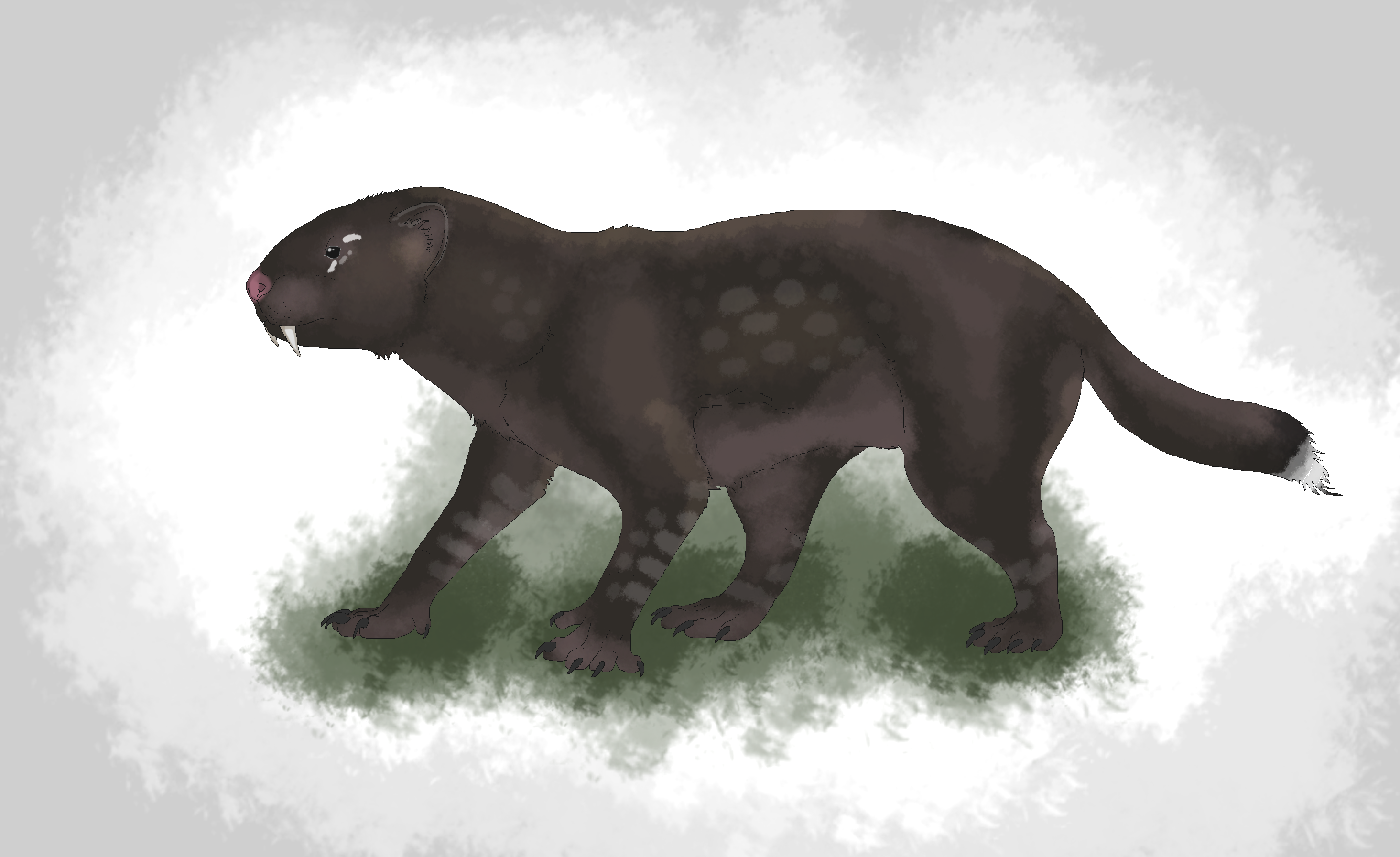HOME | DD
 AlphaX9 — Saber mink
AlphaX9 — Saber mink

#speculativeevolution #xenocene #speculativezoology
Published: 2020-07-01 07:01:14 +0000 UTC; Views: 2635; Favourites: 58; Downloads: 7
Redirect to original
Description
Saber minkScientific name: Megamustela brevis
Height: 2 feet tall
Weight: 50-70 ibs
Habitat: deciduous and coniferous forests
Region: North America
Evolved from: unspecified type of weasel
Lifespan: 10-14 years
After the extinction of many of the large carnivorans in North America during the Tabeocene and Eoxenocene epochs, a vacuum was left open with the disappearance of most of the dogs and cats. Though these lineages still exist in the continent, they’ve since declined drastically and no longer have any major relevance in most terrestrial ecosystems. Only filling small bodied or specialized niches. The weasels and predatory rats on the other hand succeeded in diversifying into various forms and are now the main tier carnivores of the continent during the Xenocene. Replacing the bobcats and lynxes that once inhabited the forests is a dog sized predator known as the saber mink. Despite its name, we don’t know what its ancestors were exactly. It’s possible that it evolved from minks like the river cats, but it’s also reasonable to assume that they evolved from the wolverine like the devil bears. In either case, the saber mink belongs to the Mustelid stock.
This predator is characterized by its dark brown coat, wide clawed paws that are partially webbed for swimming, and a pair of elongated canines akin to saber teeth (hence the name). They’re mid level predators that prey on anything deer sized or smaller. Notably game birds, water fowl, small mammals, and hoofed mammals. Despite its small size; the saber mink is a formidable creature. Most other animals avoid fighting these short carnivores unless the want 5 inch canines lodged in their throats. Their hunting style mainly consists of ambushing from the underbrush, running down their prey off guard, and then pouncing on top to wrestle it down before biting the cranium or throat. For larger prey such as deer, they simply inflict a nasty wound and wait till its prey bleeds to death or is too weak to escape.
In terms of habitat, the saber mink primarily prefer wet and muddy environments within the deciduous and coniferous forests of North America. They’re comfortable both on land and near water so it’s not uncommon to see a saber mink taking a nap or enjoying a meal near some type of water system. These creatures have extensive territories and can call a patch of forest home. They mark their territories with a strong and pungent urine which warns others to stay away. Saber minks are largely solitary, and only really interact during territorial disputes and mating. Males are slightly larger than females, though they look overall the same. During mating season, a male with venture into a females territory and will produce a sort of weird rumbling hiss to get her attention. A female saber mink will only mate with a male who’s strong enough to fight any potential suitors. If he succeeds, she’ll allow him to mate with her for several hours before he leaves to return back to his territory. The female will then gestate for 3 months and will give birth to 3-4 tan kits. Raising and protecting them fiercely until they reach 1.5 years old. When they can finally be strong and independent terrors of the forests.
Commission by Sheather888
Related content
Comments: 2

👍: 0 ⏩: 0

👍: 0 ⏩: 0

























